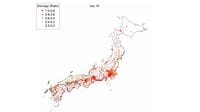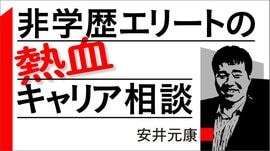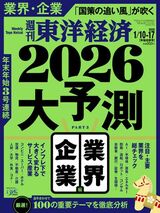参考文献
[1]Evans D. S., Jovanovic B. (1989) ‘An Estimated Model of Entrepreneurial Choice Under Liquidity Constraints’, Journal of Political Economy , 97 (4): 808–27.
[2]Dupas P., Robinson J. (2013) ‘Savings Constraints and Microenterprise Development: Evidence From a Field Experiment in Kenya’, American Economic Journal: Applied Economics , 5 (1): 163–92.
[3]Rutherford S. (2000) The Poor and Their Money . New Delhi: Oxford University Press.
[4]Banerjee A., Duflo E. (2007) ‘The Economic Lives of the Poor’, Journal of Economic Perspectives , 21 (1): 141–68.
[5]Collins D., Morduch J., Rutherford S., Ruthven O. (2009) Portfolios of the Poor: How the World’s Poor Live on $2 a Day . New Jersey: Princeton University Press.
[6]Prina S. (2015) ‘Banking the Poor Via Savings Accounts: Evidence From a Field Experiment’, Journal of Development Economics , 115: 16–31.
[7]Banerjee A. (1992) ‘A Simple Model of Herd Behavior’, Quarterly Journal of Economics , 107 (3): 797–817.
[8]Cole S., Sampson T., Zia B. (2011) ‘Prices or knowledge? What drives demand for financial services in emerging markets?’, The Journal of Finance , 66 (6): 1933–67.
[9]Drexler A., Fischer G., Schoar A. (2014) ‘Keeping it Simple: Financial Literacy and Rules of Thumb’, American Economic Journal: Applied Economics , 6 (2): 1–31.
[10]Mullainathan S., Shafir E. (2013) Scarcity: Why Having Too Little Means So Much . New York: Time Books, Henry Holt & Company LLC.
[11]Dercon S., Bold T., Weerdt J. D., Pankhurst A. (2006) ‘Group-based Funeral Insurance in Ethiopia and Tanzania’, World Development , 34 (4): 685–703.
[12]Platteau J. P. (2000) Institutions, Social Norms, and Economic Development . Amsterdam: Harwood Academic Publishers.
[13]Ashraf N. (2009) ‘Spousal Control and Intra-household Decision Making: An Experimental Study in the Philippines’, American Economic Review , 99 (4): 1245–77.
[14]Atkinson J., Janvry A. D., McIntosh C., Sadoulet E. (2010) ‘Creating incentives to save among microfinance borrowers: a behavioral experiment from Guatemala’, Mimeo, University of California at Berkeley.
[15]Aryeetey E., Udry C. (1997) ‘The Characteristics of Informal Financial Markets in Sub-Saharan Africa’, Journal of African Economies , 6 (1): 161–231.
[16]Ashraf N., Karlan D., Yin W. (2006) ‘Tying Odysseus to the Mast: Evidence From a Commitment Savings Product in the Philippines’, Quarterly Journal of Economics , 121 (2): 635–72.
[17]Dupas P., Robinson J. (2013) ‘Why Don’t the Poor Save More? Evidence from Health Savings Experiments’, American Economic Review , 103 (4): 1138–71.
[18]Karlan D., McConnell M., Mullainathan S., Zinman J. (2016a) ‘Getting to the Top of Mind: How Reminders Increase Saving’, Management Science.
[19]Abebe G., Tekle B, and Mano Y. (2018) “Changing Saving and Investment Behaviour: The Impact of Financial Literacy Training and Reminders on Micro-businesses,” Journal of African Economies, 1-25.
[2]Dupas P., Robinson J. (2013) ‘Savings Constraints and Microenterprise Development: Evidence From a Field Experiment in Kenya’, American Economic Journal: Applied Economics , 5 (1): 163–92.
[3]Rutherford S. (2000) The Poor and Their Money . New Delhi: Oxford University Press.
[4]Banerjee A., Duflo E. (2007) ‘The Economic Lives of the Poor’, Journal of Economic Perspectives , 21 (1): 141–68.
[5]Collins D., Morduch J., Rutherford S., Ruthven O. (2009) Portfolios of the Poor: How the World’s Poor Live on $2 a Day . New Jersey: Princeton University Press.
[6]Prina S. (2015) ‘Banking the Poor Via Savings Accounts: Evidence From a Field Experiment’, Journal of Development Economics , 115: 16–31.
[7]Banerjee A. (1992) ‘A Simple Model of Herd Behavior’, Quarterly Journal of Economics , 107 (3): 797–817.
[8]Cole S., Sampson T., Zia B. (2011) ‘Prices or knowledge? What drives demand for financial services in emerging markets?’, The Journal of Finance , 66 (6): 1933–67.
[9]Drexler A., Fischer G., Schoar A. (2014) ‘Keeping it Simple: Financial Literacy and Rules of Thumb’, American Economic Journal: Applied Economics , 6 (2): 1–31.
[10]Mullainathan S., Shafir E. (2013) Scarcity: Why Having Too Little Means So Much . New York: Time Books, Henry Holt & Company LLC.
[11]Dercon S., Bold T., Weerdt J. D., Pankhurst A. (2006) ‘Group-based Funeral Insurance in Ethiopia and Tanzania’, World Development , 34 (4): 685–703.
[12]Platteau J. P. (2000) Institutions, Social Norms, and Economic Development . Amsterdam: Harwood Academic Publishers.
[13]Ashraf N. (2009) ‘Spousal Control and Intra-household Decision Making: An Experimental Study in the Philippines’, American Economic Review , 99 (4): 1245–77.
[14]Atkinson J., Janvry A. D., McIntosh C., Sadoulet E. (2010) ‘Creating incentives to save among microfinance borrowers: a behavioral experiment from Guatemala’, Mimeo, University of California at Berkeley.
[15]Aryeetey E., Udry C. (1997) ‘The Characteristics of Informal Financial Markets in Sub-Saharan Africa’, Journal of African Economies , 6 (1): 161–231.
[16]Ashraf N., Karlan D., Yin W. (2006) ‘Tying Odysseus to the Mast: Evidence From a Commitment Savings Product in the Philippines’, Quarterly Journal of Economics , 121 (2): 635–72.
[17]Dupas P., Robinson J. (2013) ‘Why Don’t the Poor Save More? Evidence from Health Savings Experiments’, American Economic Review , 103 (4): 1138–71.
[18]Karlan D., McConnell M., Mullainathan S., Zinman J. (2016a) ‘Getting to the Top of Mind: How Reminders Increase Saving’, Management Science.
[19]Abebe G., Tekle B, and Mano Y. (2018) “Changing Saving and Investment Behaviour: The Impact of Financial Literacy Training and Reminders on Micro-businesses,” Journal of African Economies, 1-25.
ブックマーク
記事をマイページに保存
できます。
無料会員登録はこちら
ログインはこちら
印刷ページの表示はログインが必要です。
無料会員登録はこちら
ログインはこちら
トピックボードAD
有料会員限定記事
キャリア・教育の人気記事
































無料会員登録はこちら
ログインはこちら